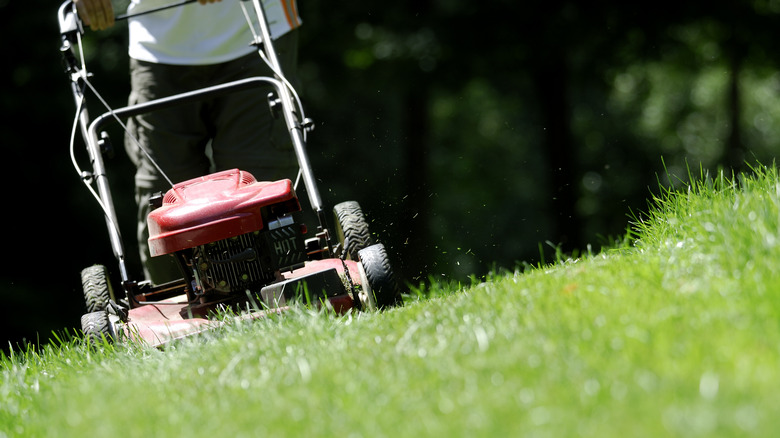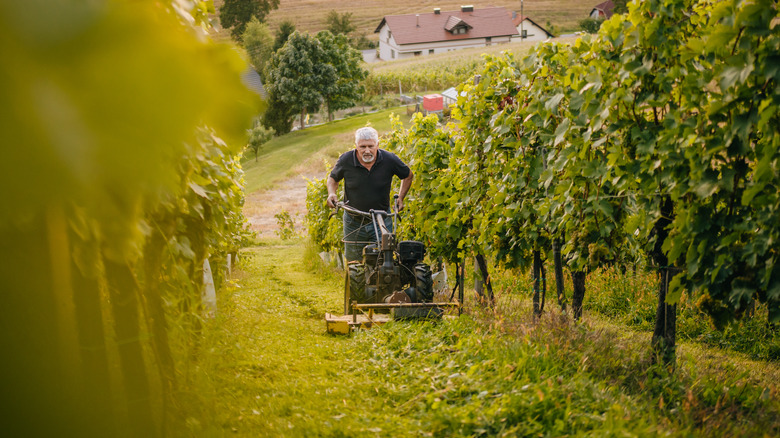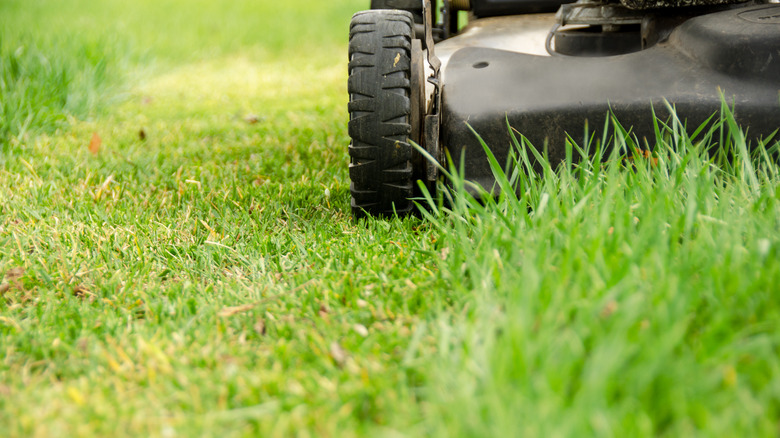The Best Method For Mowing A Lawn On A Steep Hill
As tedious as mowing your lawn can be, the job becomes even more difficult and time-consuming if your yard has a steep hill. Not only can this be challenging, but it can also be dangerous. A steep incline puts your machine at a greater risk of rolling over, which can potentially pin or crush you while also exposing you to the dangers of a rotating blade.
Fortunately, it's possible to safely mow your yard, even if all or part of it is at an incline steep enough for all the neighborhood kids to use it for sledding during the winter months. The safest way to address the hill on your property is to work upwards vertically, regardless of whether you use a riding or a push mower. If you own a push model, working horizontally (from one side of the hill to the other) is also a good option. However, whichever way you decide to approach the task, you'll want to operate in a slow and controlled manner to mitigate the risk of losing your balance. If using a push mower, you'll also want to wear comfortable footwear that affords you plenty of traction. If you have old soccer cleats sitting in your closet, now may be a good time to bust them out!
How to safely mow a steep hill
Where you begin mowing can play a significant role in the safety and success of the task at hand. If you use a push mower, start at the bottom of the hill and work upwards. Turn your machine off at the top of the slope, then walk back down. You can then turn it back on and continue to mow the next section upwards in a straight line. This prevents your machine from rolling on top of you should you move downwards and fall forward. Using a push model also allows you to mow the hill from side to side, which many people find less demanding than trudging up and down a steep incline.
If you are using a riding lawnmower, it's best to start at the bottom of the hill and work your way upwards in a straight line. Then, when you get to the top, instead of turning around and heading back downwards, slowly go backwards until you reach the bottom. This technique prevents the mower's heaviest components from ever being on top of you or directly under you while on the hill, which better protects you if it flips over. It's also best to avoid approaching the hill perpendicular to its incline when using a riding mower, as a particularly steep angle may cause the machine to flip onto its side.
Choose the right mower for the job
If your hill is at an incredibly steep angle, it's best to use a push mower. While a riding model might get the job done quicker and be less labor intensive, incorrectly using one to mow a hill that is at a drastic incline puts you at an increased risk of a rollover should your machine not be equipped to handle the slope. Otherwise, it's common for homeowners with steep hills to use a weed whacker or other handheld trimmer to take care of the long grass without having to worry about pushing a mower uphill or risk flipping a riding model if the gradient is unusually steep.
If the hill covers a large portion of your yard, it may be worth investing in a professional-grade machine or hiring a landscaping company to mow for you. While weed-whacking a small knoll won't take all day, tackling a massive hill spanning most of your property will likely take a lot of time and effort.
Regardless of the mower you employ, consider investing in one with rear-wheel drive, which affords it better traction when navigating an incline. If using a push model, opt for a lightweight design with large wheels to make pushing it far easier.


